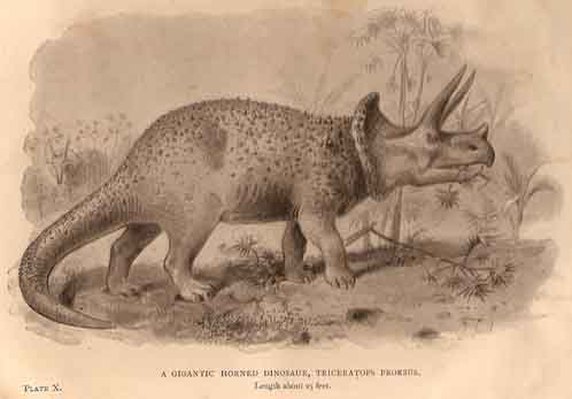Palaeontologists are able to infer an extraordinary amount of detail about what dinosaurs looked like from fossils. Grooves over the surface of a Triceratops’ skull show where blood vessels and muscles ran between two hard layers, bone on one side and a tough layer of keratin on the other. Keratin is a tissue still common in animals today – it’s found in our own fingernails and the beaks of birds.
But what colour was Triceratops? Colour is not preserved in the fossil record so we’ll probably never know. Triceratops could have been greeny-brown for camouflage, fiery red to frighten predators, or, for all we know, a multi-coloured clown of the dinosaur world.
Over the years, various artists have come up with their own visions of what Triceratops might have looked like. Here are just a few examples:

Reconstitution d’un Triceratops horridus, par F. John de Tiere der Urwelt (Creatures of the Primitive World), Allemagne (publie 1902-1906).

Plate XI et le couvercle. Du livre 1897: <<Extinct Monsters>>. Par le Rev HN Hutchinson, avec des illustrations de J. Smit et autres.

Par Charles R. Knight, 1901 au Smithsonian Institute, NMNH Paleobiology, États-Unis

Par Charles R. Knight, 1904 Animals of the Past




